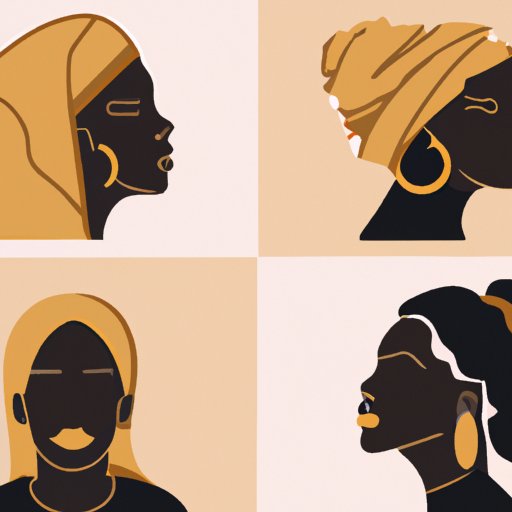
Introduction
Physical characteristics refer to the features, traits, and attributes that make up a person’s appearance. These characteristics range from the color of one’s skin and eyes to their height, weight, and body shape. They are often inherited and influenced by genetics, but can also be shaped by environmental and societal factors.
This article aims to provide a comprehensive understanding of the concept of physical characteristics, their different types, and the role they play in shaping our lives.
The Ultimate Guide to Understanding Physical Characteristics
Physical characteristics can be broadly categorized into two types, namely, visible and invisible. Visible or apparent characteristics are those that are immediately noticeable, such as skin color, hair texture, and facial features. Invisible characteristics are those that are not immediately apparent and may require testing, such as blood type or genetic disorders.
Understanding physical characteristics is essential because they play a crucial role in our self-identity, social interactions, and overall well-being. Our physical appearance can influence how we are perceived by others and how we perceive ourselves.
The Science Behind Physical Characteristics and What They Say About You
Physical characteristics are heavily influenced by genetics and can be passed down from generation to generation. Genes play a significant role in determining everything from the shape of our nose to our susceptibility to certain diseases.
While physical characteristics can reveal some information about a person, it is important to remember that they do not define a person entirely. For example, a person’s eye color may indicate their genetic heritage, but it does not necessarily reflect their character, personality, or intelligence.
A Deep Dive into Physical Characteristics: How They Affect Our Lives
Physical characteristics can affect everything from our job prospects to our dating life. For example, research has shown that taller people are more likely to earn higher salaries and be viewed as more competent and influential in the workplace.
Physical characteristics can also impact our social interactions. For example, people who are considered conventionally attractive are often perceived as more friendly, likeable, and trustworthy, while those who possess non-normative characteristics are often subjected to discrimination and bias.
Why Physical Characteristics Matter & How to Embrace Them
It is important to accept and embrace one’s physical characteristics because they are an integral part of who we are. Learning to love and appreciate our bodies can help to improve our self-confidence and overall well-being.
Improving self-confidence can be challenging, but there are several things that one can do to cultivate self-love. These include practicing gratitude, engaging in physical activity, engaging in self-affirming self-talk, and taking care of one’s physical health.
The Role of Physical Characteristics in Building Personal Identity
No two people are physically identical, and our physical characteristics play a significant role in shaping our personal identities. Our unique physical attributes can help us to stand out and be recognized as individuals, and they can also provide a sense of belonging to specific communities or groups.
As we grow and develop, our physical characteristics can also be influenced by environmental and societal factors, such as exposure to certain foods, cultural practices, and social norms. Understanding the complex interplay between genetics and environment can help us to develop a more nuanced understanding of physical characteristics and their role in shaping our lives.
Exploring the Diversity of Physical Characteristics Across Cultures
Physical characteristics can vary significantly across different cultures and geographic regions. For example, skin tones can range from the darkest shades of black to the lightest shades of white, and hair textures can vary from straight to curly to kinky.
While physical differences can be a source of conflict in some instances, they can also provide opportunities for celebrating diversity and embracing cultural differences. It is essential to recognize and value the ways in which physical characteristics contribute to the rich tapestry of human experience.
Conclusion
Physical characteristics are an essential part of what makes us human. Understanding and embracing our physical attributes can help us to cultivate self-love, improve our social interactions, and develop a more nuanced understanding of the complex interplay between genetics and environment. As we move forward, it is essential to continue to celebrate and value the diversity of physical characteristics across cultures and to recognize their important role in shaping our lives.




